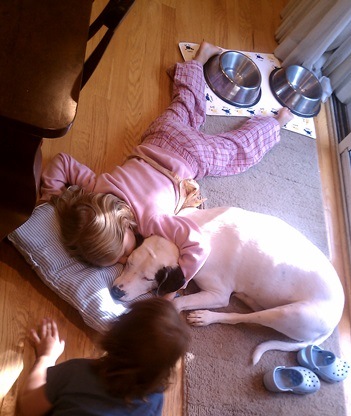The science behind “milking it”
Happy New Year! Really, truly, happy.
We have more power to create our happiness that we may have realized. Once again, current neuroscience is illuminating the mechanics of ancient wisdom, as we discover why and how gratitude makes us happier in a meaningful, lasting way.
Earlier in December I wrote “Milk It,” about activating gratitude in the moment, even when you are not feeling especially cheerful or grateful. I talked about how to use your senses to hold yourself in presence. This can open you to noticing something that you can enjoy in the current moment, even when you are not feeling happy.
Maybe it’s the warmth or softness that your clothing is providing you, or the rich colors in a painting on the wall. Maybe you’ll notice the soothing sound of your breathing, or a streak of sunlight shining across the floor.
When you notice something appealing or comforting, you can transform simply noticing into a lasting sense of gratitude, by “milking it.” This means, allow yourself to truly experience what feels good about what you notice. Be with it, feel it, take in the nourishment that this act of allowing makes possible.
Rick Hanson, author of “Hardwired for Happiness: The New Brain Science of Contentment, Calm, and Confidence” calls this process “taking in the good.” Dr. Hanson’s research shows that taking in and feeling the good of your experience, for at least 15 seconds, can change the “wiring” of your brain, making it possible for you to experience more happiness.
You know those days when you mess up, and, despite all the things you did right that day, you dwell on the one thing you did wrong? Or, when you are trying to sleep at night, and that one “bad” experience in your day still weighs heavily on the mind — why don’t we tend to doze off, basking in all the things that went right instead?
Rick Hanson explains that our brains have what’s called a “negativity bias.” In other words, they are wired to remember and learn from the “bad,” because this vigilance was what helped our ancestors to survive as we evolved. The brain adapted to store into our long-term memory those experiences that threatened our survival, whereas other, more pleasant experiences were of less use and discarded. In our current society, the negativity bias is not so helpful, and in fact it causes us to hold on to the negative experiences — and to see less value in the good ones.
By feeling and “taking in” the good, and intentionally allowing yourself to enjoy it for at least 15 seconds, your brain has enough time to begin to store this experience into your long-term memory, Dr. Hanson tells us. By doing this more and more often, we create structures in our brains that cause us to notice more good and feel greater happiness.
You can see Dr. Hanson explain this process in greater detail in this video:
I think this is why it works when we choose to “flip the switch” — when we choose to look at our experiences through the lens of gratitude and compassion, we process differently. We create love rather than fear. And when we truly allow the good we notice to sink in, and to feel as good as it can feel, we change our brains in a way that creates lasting changes to our habits of thought and emotion.
Carlos Castaneda said, “We either make ourselves miserable or we make ourselves strong. The amount of work is the same.” It seems a third choice is “we make ourselves happy,” with presence, sustained allowing, and gratitude.
Blessings, love, magic and happiness to you in 2014 and always!
Love,
Shannon


